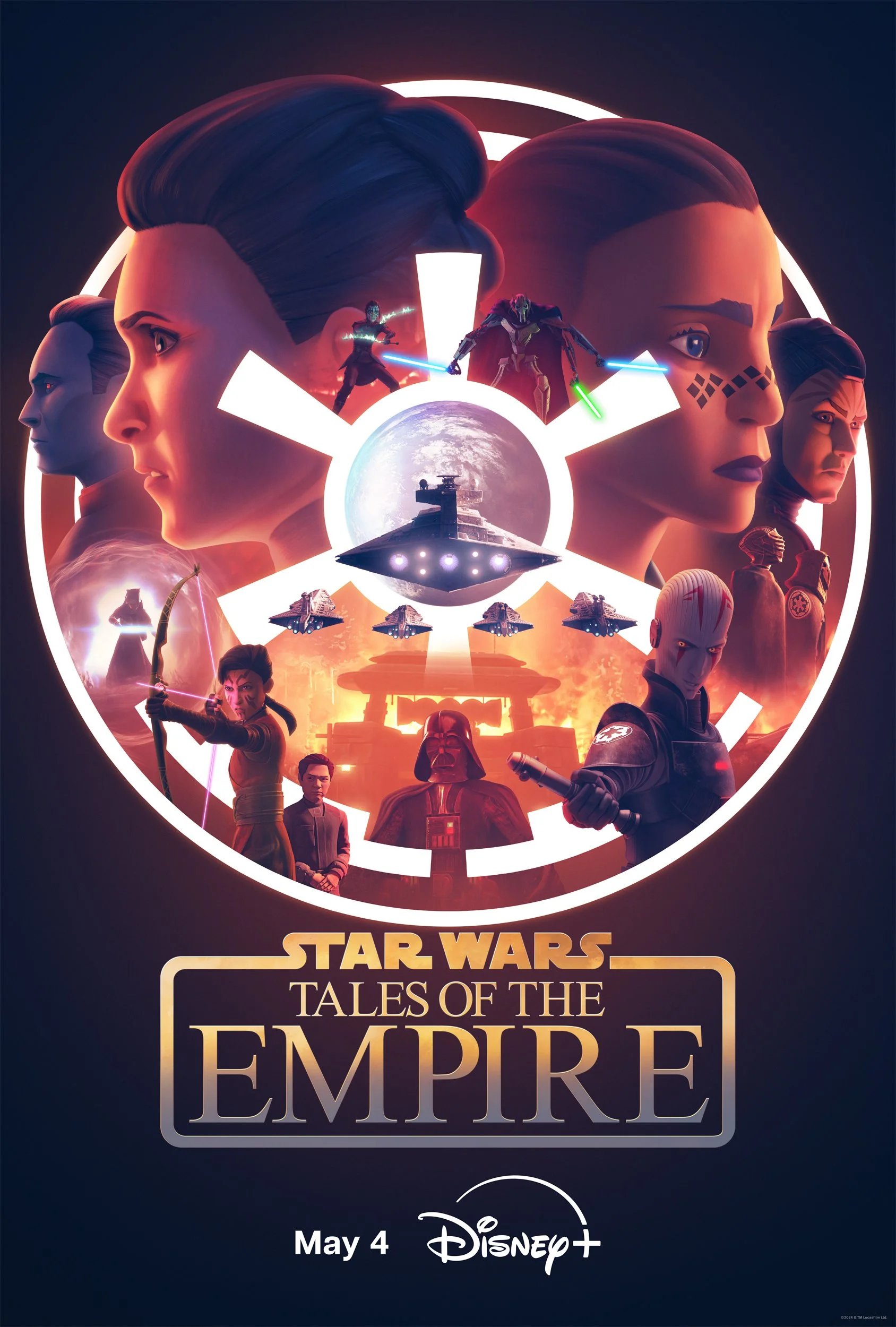Star Wars: Tales of the Empire Is Dark Star Wars Catered to Kids
Star Wars: Tales of The Empire offers a censored view into the dark side made accessible to a younger audience. Still, it is an interesting bit of world-building that brings Clone Wars fans some more content to chew on. It offers significant insight into an already-established character and a new(ish) one. Is it exciting dramatic material? Sometimes. Often, it's predictable, but not entirely in a bad way. The first half of the story follows the path of Morgan Elsbeth. If you don't know who Morgan Elsbeth is, she's a character played by Diana Lee Inosanto in live-action in The Mandalorian and Ahsoka. Morgan is a witch who can weave magical powers. What she uses those powers for is to benefit the Empire. In this show, the audience gets to witness how Morgan fell to the dark side.
The show starts with a bang. It cuts to a planet lit in a harsh red tone where we see General Grevious commanding a genocide. In this scene, we really get an idea of how Grevious is pure evil. When he wins a duel against a Jedi, he laughs maniacally after killing his opponent. Tales of the Empire contains a lot of the dark material certain fans of Star Wars want to see but has been watered down by Disney.
Although there are shocking revelations, children getting murdered, and a man being burned alive, Star Wars is thematically meant for kids. It's inspired by the Flash Gordon Saturday morning serials, Joseph Campbell novels, and Akira Kurosawa films. It's the tale of how someone becomes a hero. It's also a cautionary story of what happens when a hero falls for other temptations, making them a villain. It's meant to explain the differences between good versus evil and right versus wrong to children. Although it's a franchise for twelve-year-olds, shows like Andor proves how Star Wars can be much more than fantasy for kids.
Tales of the Empire caters to the fans of The Clone Wars who yearn for the darker elements of Revenge of the Sith and The Empire Strikes Back. However, it remains accessible to a younger audience by making itself a cartoon. The more violent scenes are tactfully handled off-screen, and the dialogue has a light, simplistic quality that aids kids in following the story. This approach doesn't dilute the show's impact, making it a suitable choice for family viewing, even if it is about the dark side.
On the surface, it's a show about choice. Do we choose to give in to our demons when faced with enormous adversity? Or do we strive to be better, fighting against the devil that rests on our shoulders? Do we choose to forgive instead of hate? These are the same questions that have been addressed in Anakin Skywalker's fall. The difference between him and his student (Ahsoka Tano) is that one chose to walk away from the Jedi while the other stuck around, driving him mad. Although the show is centered around the downfall of the Jedi, it's not uncritical of them.
The most interesting character of the show is Barriss Offee. She is a character who made a very small appearance in Attack of the Clones but has a much larger role in this mini-series that fills the second half of the show. Barriss is a former Jedi who's serving time as a prisoner for damning the Jedi Council, saying they are going to lead to the Republic's fall. Her words were considered treasonous. After Order 66, where all the Jedi are ordered to be executed, Offee's comments are commended, and she's offered a spot as an Inquisitor. After witnessing how relentless and cruel the Inquisitors are, Barriss tries to break free of them.
Barriss Offee is a lot like Ahsoka Tano. Ahsoka was unfairly accused of a crime by the Jedi Council, who never gave her a chance to defend herself. In contrast, Barriss is imprisoned for speaking out against the Council. When Order 66 happened, it turned some Jedi into Sith. It was an opportunity for the Empire to capitalize on strengthening themselves by making former Jedi into a dark side force-wielding weapon. Without giving too much away, Barriss Offee's story doesn't have a happy ending.
Tales of the Empire promises a lot in its title and delivers more nuance than shows like The Bad Batch does. TOTE can be dull in its reported themes of dark vs. light, being redundant. Unfortunately, that's what Star Wars is. But it doesn't have to be. Star Wars can thrive to be a little more like Andor or The Empire Strikes Back. Tales of the Empire is like a lighter Empire where its themes don't reach a big plot twist, but the show is more moody than the usual, light-hearted nature that is in Star Wars' DNA. Tales of the Empire offers the same insight, showing how a character can rise or fall.
It's a view of the dark side that isn't necessarily new but engaging in each episode's short length. The longest an episode goes is sixteen minutes. This isn't necessarily a show, as it is a collection of shorts. Still, the shorts are intriguing enough to keep the viewer engaged to see what each chapter of the mini-series brings. Although Tales of the Empire goes far with the dark side, it doesn’t go far enough. By handling things with Mickey’s kid’s gloves, we have a series that limits its potential in going as far as Revenge of the Sith did, reducing the impact of the plot to a certain degree. For what it is, a cartoon show, Tales of the Empire, does a good job of capitalizing on the events of Order 66. Even if it’s the millionth time Dave Filoni has used it to push the story forward.



